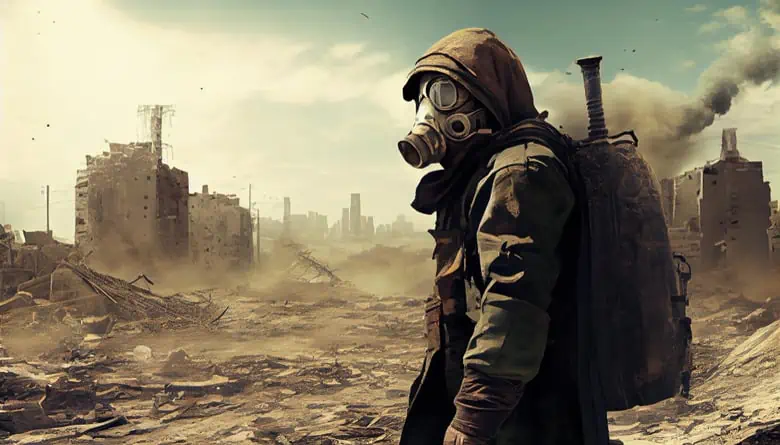A Comprehensive Guide to Counter-Strike: Global Offensive

Counter-Strike: Global Offensive, commonly known as CSGO, is a multiplayer first-person shooter (FPS) that has captivated the gaming world since its release in 2012. With millions of active players and a vibrant esports scene, CSGO offers a unique blend of strategic gameplay, precise aiming, and teamwork. In this comprehensive guide, we will delve deep into the world of CSGO, covering its history, gameplay mechanics, competitive scene, and essential tips for both newcomers and experienced players.
A Brief History of CSGO
Before diving into the intricacies of CSGO, it’s essential to understand its roots. The Counter-Strike series began as a mod for the popular game Half-Life in the late 1990s. The original Counter-Strike, also known as CS 1.0, was released in 1999 and quickly gained a dedicated player base. Over the years, several iterations of the game followed, each refining and expanding upon the core gameplay mechanics.
CSGO, the fourth installment in the series, was officially released by Valve Corporation in August 2012. It retained the fundamental elements of the series while introducing updated graphics, new maps, and improved gameplay features. CSGO’s release marked a significant milestone, as it propelled the Counter-Strike franchise into the world of competitive esports, where it continues to thrive today.
Gameplay Mechanics
CSGO’s gameplay is renowned for its depth and complexity. The game revolves around two teams: terrorists and counter-terrorists. The primary objectives vary depending on the game mode but typically include tasks such as planting or defusing a bomb, rescuing hostages, or eliminating the opposing team.
Key gameplay mechanics include:
Weapons and Equipment: At the beginning of each round, players can purchase firearms, grenades, and armor using in-game currency. The choice of weapons and equipment is crucial, as it can significantly impact a team’s success.
- Economy: Proper management of in-game currency is vital. Winning rounds and completing objectives yield rewards, while losing rounds can lead to financial constraints, forcing teams to make strategic decisions.
- Recoil Control: Each weapon in CSGO has its unique recoil pattern, requiring players to learn and master precise control for accurate shooting.
- Map Knowledge: Understanding map layouts, callouts, and common strategies is paramount. Map control, positioning, and teamwork play pivotal roles in winning matches.
- Communication: Effective communication within a team is critical for coordinating strategies, sharing information, and making split-second decisions.
The Competitive Scene
CSGO boasts one of the most competitive and thriving esports scenes globally, attracting professional players and teams from around the world. Major organizations like ESL, DreamHack, and FACEIT host prestigious CSGO events, including the ESL Pro League, Intel Extreme Masters, and the FACEIT Major.
Competitive CSGO features various formats, including best-of-one and best-of-three matches, group stages, and playoffs. Teams compete on a variety of maps, with Dust II, Mirage, and Inferno among the most popular choices. Professional teams employ intricate strategies and tactics, setting a high standard for aspiring players looking to improve their skills.
Community and Customization
CSGO’s dedicated player community has played a pivotal role in its continued success. The game supports modding and custom content creation, allowing players to design their maps, skins, and game modes. The Steam Workshop serves as a central hub for players to share and download custom content, expanding the game’s variety and replayability.
In addition to custom content, CSGO has an active community of content creators and streamers on platforms like Twitch and YouTube. These creators produce a wide range of content, from gameplay tutorials and strategy guides to entertaining highlights and funny moments.
The Steam Marketplace enables players to trade and purchase in-game skins, cosmetic weapon finishes that can be applied to firearms. Skins vary in rarity and design, making them highly sought after by collectors and enthusiasts. The skin market has created a unique economy within the game, further enriching the CSGO experience.
The Role of Strategy
Strategy is at the heart of CSGO’s gameplay. Matches are not won solely through individual skill but through coordinated efforts and well-executed strategies. Teams must plan their approach for both offensive and defensive rounds, taking into account the map’s layout, objectives, and the opposing team’s tendencies. Communication plays a crucial role in CSGO, as players share information, coordinate attacks, and make critical decisions in real-time. Developing effective strategies and executing them as a team is the key to success in this tactical FPS.
Weapons and Economy
CSGO’s economy system adds a layer of depth to the gameplay. Players earn in-game currency (referred to as “money” or “eco”) by winning rounds, planting or defusing bombs, and achieving specific objectives. Money is used to purchase weapons, armor, grenades, and other equipment at the start of each round. Proper management of the team’s economy is essential, as it can influence the outcome of the game. Teams must decide when to save their money when to invest in weapons, and when to force-buy with limited funds. Understanding the economic aspects of CSGO is a critical skill for both individual players and teams.
Map Knowledge and Positioning
In CSGO, each map offers a unique layout, chokepoints, and strategies. Understanding the intricacies of each map is essential for success. Players must learn callouts (commonly used location names), map control, and effective positioning to gain an advantage. Map knowledge allows players to anticipate enemy movements, hold key areas, and execute coordinated strategies. It also enables players to make informed decisions about where to plant or defuse bombs, rescue hostages, or engage in firefights.
Team Communication
Effective communication is the backbone of CSGO’s team-based gameplay. Players need to convey information about enemy locations, map control, and tactical plans to their teammates. Clear and concise callouts are crucial for coordinating strategies and responding to in-game events. Whether you’re playing with a group of friends or in a competitive matchmaking game, being able to communicate effectively can be the difference between victory and defeat. Developing strong communication skills is an essential aspect of becoming a successful CSGO player.
Continuous Improvement and Skill Development
Becoming proficient at CSGO is an ongoing process that requires dedication and practice. Players must continually refine their aiming skills, recoil control, and map knowledge. Many aspiring CSGO players watch professional matches and learn from experienced players to improve their gameplay. Additionally, training maps and community servers offer opportunities for skill development and practice. The CSGO community is known for its dedication to improvement, and players of all skill levels can find resources and support to help them on their journey to becoming better players.
Conclusion
Global Offensive is a dynamic and complex game that rewards teamwork, strategy, and individual skill. Whether you’re a casual player or aspiring to compete at a higher level, understanding csgo and the aspects of gameplay, including strategy, economy, map knowledge, communication, and skill development, is essential for success in this iconic FPS title.






